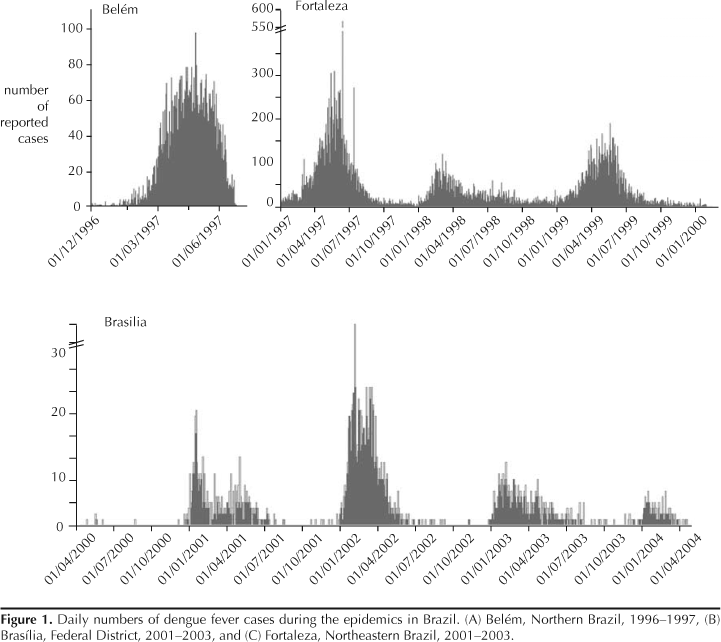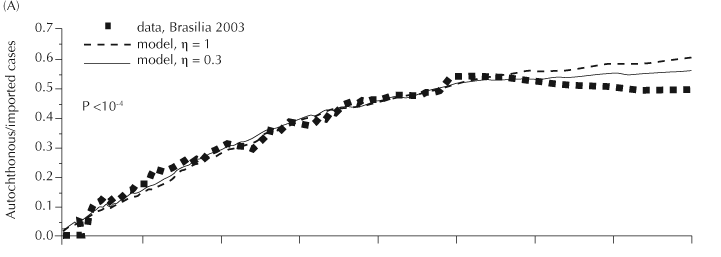OBJECTIVE: To estimate the basic reproduction number (R0) of dengue fever including both imported and autochthonous cases. METHODS: The study was conducted based on epidemiological data of the 2003 dengue epidemic in Brasília, Brazil. The basic reproduction number is estimated from the epidemic curve, fitting linearly the increase of initial cases. Aiming at simulating an epidemic with both autochthonous and imported cases, a "susceptible-infectious-resistant" compartmental model was designed, in which the imported cases were considered as an external forcing. The ratio between R0 of imported versus autochthonous cases was used as an estimator of real R0. RESULTS: The comparison of both reproduction numbers (only autochthonous versus all cases) showed that considering all cases as autochthonous yielded a R0 above one, although the real R0 was below one. The same results were seen when the method was applied on simulated epidemics with fixed R0. This method was also compared to some previous proposed methods by other authors and showed that the latter underestimated R0 values. CONCLUSIONS: It was shown that the inclusion of both imported and autochthonous cases is crucial for the modeling of the epidemic dynamics, and thus provides critical information for decision makers in charge of prevention and control of this disease.
Dengue; Flavivirus Infections; Risk; Communicable Period; Disease Outbreaks; Epidemiologic Surveillance







